The Microsoft Surface Pro 6 Review: More Than A Color
by Brett Howse on October 16, 2018 3:01 AM EST- Posted in
- Laptops
- Microsoft
- Surface
- Tablets
- Surface Pro
- Surface Pro 6
Design
Surface Pro has become an iconic design now, and perhaps it shouldn’t be too surprising to see more of an evolution in a new launch than the revolution we sometimes hope for. As the saying goes, if it’s not broke, don’t fix it, and there’s a lot that’s not broken on the Surface Pro design. Ever since moving to the 3:2 aspect ratio back with the Surface Pro 3, Microsoft has seen the other manufacturers imitate their design, with varying levels of success.
Surface Pro 6 keeps the unibody magnesium design relatively unchanged from the 2017 model, with the same rounded edges, and exactly the same exterior dimensions. Weight is almost identical as well, with the Core i5 model coming in at 770 grams, and the Core i7 slightly heavier at 784 grams to account for the fan.
Really, the big change on the design front is the new black color, which as you’d expect on an all-metal device like the Surface Pro, is an anodized finish. The new color option does look striking, especially with the Microsoft logo as a contrasting reflective finish. Microsoft will still be offering the platinum color they’ve been using since the Surface Pro 3. There’s got to be a concern that the black finish won’t be as durable, and any scratches will be immediately apparently, whereas with the platinum finish, scratches would be masked by the color of the metal underneath, but that how durable the finish is will require a longer evaluation.
Surface Pro keeps the same bezel sizes, and with the move to thinner and thinner display bezels, it does look a bit out of place compared to something like the Huawei MateBook X Pro, but since the Surface Pro can also be a tablet, it makes sense to keep some bezel in place as somewhere to hold the device when necessary.
Microsoft has been outfitting Surface with a fast and reliable Windows Hello camera since the Surface Pro 4 launched, and the latest model continues this. The sign-in process is simple, fast, and secure, and it’s hard to say if it’s better than the previous model since both work so quickly.
Being so small and light, Surface Pro is incredibly easy to travel with. The full-friction hinge mechanism lets you use the tablet in an infinite number of positions as well. If you are someone that often types in their lap while traveling though, convertible tablets are generally not as user-friendly as laptops, although it can be awkwardly done if needed.
Accessories
Along with things that have not changed with this launch is the lineup of accessories for the Surface Pro. Every Surface Pro practically requires a keyboard, and Microsoft offers several to suit the customer’s preferences.
The standard Type Cover costs $129.99, and comes in black. If you want a more premium experience, Microsoft also sells the Surface Pro Signature Type Cover which features an alcantara cover, and this model comes in platinum, cobalt blue, burgundy, and black for $159.99. At one point these prices seemed extravagant for a keyboard accessory however Microsoft seems conservative in regards to pricing compared to Apple and Google.
The typing experience on the Type Covers is solid, with good key feel, and the keys stretch to the edges of the cover. The glass trackpad is also excellent. The covers haven’t changed much since they were introduced with the Surface Pro 4, and for good reason.
Microsoft also offers a Surface Pen option, and although the pen was once included in the purchase price, it’s now a separate accessory, but that does give the option of different color pens. The pen was improved dramatically with the previous 2017 Surface Pro, offering more pressure sensitivity, as well as tilt support, and has kept the Surface tradition of replaceable tips as well. So for 2018, this accessory is also unchanged, but with the improvements last year, the inking experience on Surface Pro is already excellent.
Microsoft also offers a docking solution, which hooks up to the SurfaceConnect charging port, and provides two DisplayPort as well as Gigabit Ethernet, four USB 3.0 ports, and audio output. The downside to this dock is that the two DisplayPorts are fed from the same channel, so you are limited to a single UHD output at 60 Hz, and if you try to connect two UHD displays you’ll end up stuck at a 30 Hz refresh rate.
Ironically, Microsoft also sells a SurfaceConnect to USB-C adapter. This seems to be their solution to people who would like USB-C, especially for docking, but it has the same limitations as the Surface Dock being only able to feed a single UHD display at 60 Hz. It is possible to connect a second display to the DisplayPort output on the Pro 6 itself, but that does get a bit messy as far as cabling is concerned. What would be preferable is to offer the USB-C right on the Pro 6 rather than sell a dongle.


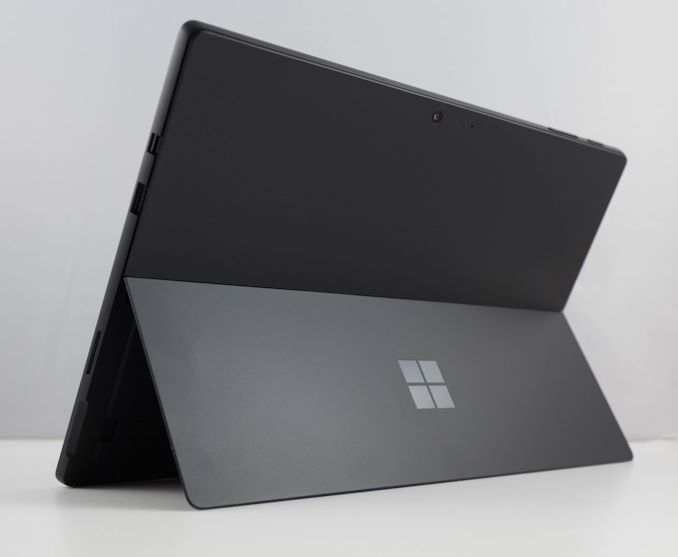
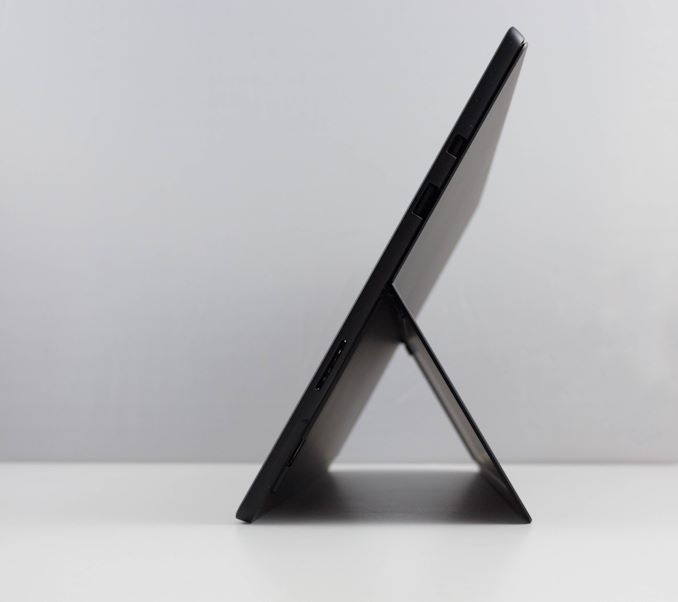
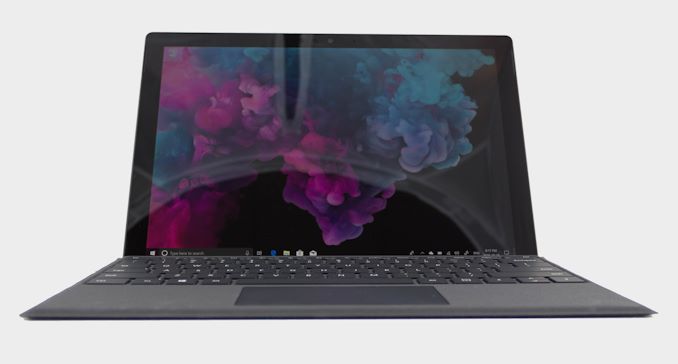
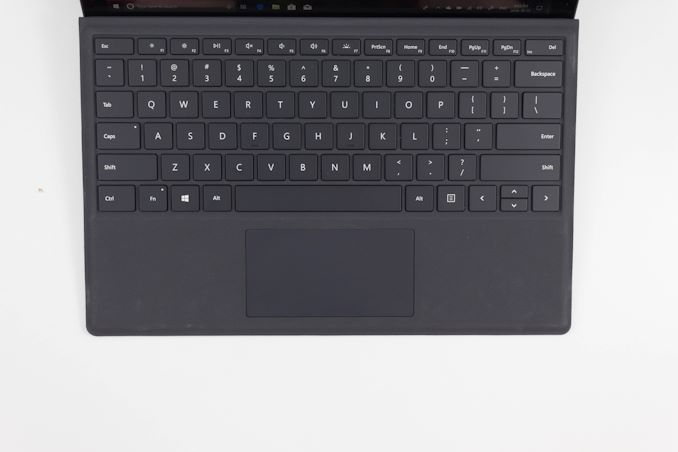
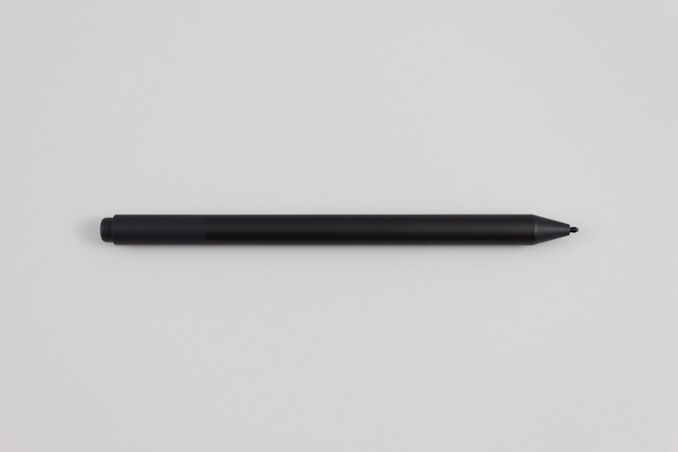








80 Comments
View All Comments
Speedfriend - Tuesday, October 16, 2018 - link
For all the talk of a lack of innovation from Intel, the charts comparing the various generations are quite incredible. 60% improvement in single threaded, 175% in multi, combined with a 100% improvement in battery life.Microsoft has got a winning device here, I see more Surface Pros at conferences than any other type of laptop including Macs, though still behind iPads
fallaha56 - Tuesday, October 16, 2018 - link
you’re bigging up numbers from years and years ago....vanilla_gorilla - Tuesday, October 16, 2018 - link
I'm guessing these are Microsoft conferences? Not sure where you're seeing more Surface devices than Macs or Thinkpads or HP laptops. Surface sells in incredibly small numbers compared to those other manufacturers. And what conferences have more iPads than anything? I'm not sure if you're lying or if you're attending conferences selling timeshares to senior citizens?althaz - Wednesday, October 17, 2018 - link
You're just wrong here. Apple definitely sells more than Microsoft (Lenovo is around the level of Apple with HP and Dell far outstrip the rest). But the different isn't huge. There's no world in which "Surface sell in incredibly small numbers" compared to any other manufacturer's line.When you are talking about premium laptop-ish devices, the Surface line is comparable to the other popular makes. It's smaller than the top 4 - but in its category not by all that much.
melgross - Wednesday, October 17, 2018 - link
I don’t know what conferences you go to, other than those for IT, but I’ve never seen one of these anywhere.With all of the talk about these, as though they’re really important, Microsoft still has to show that they can grow yearly sales beyond the 3 million (maybe!) they barely managed so far. With SurfaceBook sales lower than 500,00 a year, and the Surface PC supposedly in the tens of thousands a year, none of these lines are doing anything near well.
TheinsanegamerN - Wednesday, October 17, 2018 - link
Except that speed increase comes from lower power usage. At the same clocks, intels chips are still not any faster then 3 years ago.Yeah, great, you went from "slow" to "decent speed.". The iGPU is still no faster, max performance is still dependent on the cooling system, and anything that isnt restricted to CFL light-bulb power levels is no faster.
name99 - Wednesday, October 17, 2018 - link
Looking at this sort of improvement misses the reason for concern with Intel.The original CPU (i3-4020Y) is 1.5 GHz, no turbo.
The end point CPU (i7-7660U) is 2.5GHz base, turbo to 4GHz.
Now from one point of view, it's nice that Intel has managed to boost frequency this way while not moving too far outside the power envelope. That helps low power devices (like Surface!) AND it helps large core count server chips.
BUT look at the larger story. It's about lower power, NOT about higher achievable frequencies. The tech that got this does not help that much in boosting the frequency of your 120W desktop CPU in single-threaded mode. Meanwhile, there's been very little improvement in IPC, which can improve performance at the high end.
If you care about some classes of devices, yes, great progress by Intel. But if you care about single-threaded performance at the high end, what's shown here is irrelevant, and just highlights that Intel either through inability or lack of interest is not delivering anything close to the same improvements at the high end.
GreenReaper - Friday, October 19, 2018 - link
The original was a i5-3317U dual-core hyperthreaded 1.7Ghz -> 2.6Ghz turbo. I have one. It's still quite nice, although with the cooling it has it can only maintain ~1.9Ghz under full load with BOINC.Surface Pro 2 and 3 were significant steps back in terms of single-threaded performance, to achieve the "thin and light" goal and improve battery life. That was probably the right decision for the target audience, but given I use my Pro 1 as a second screen I'm glad I got it cheap when the Pro 2 came out.
Eliadbu - Friday, October 19, 2018 - link
The days of CPU improvement are near the endIPC improvement is near the limit adding more instruction to the already large CISC is doubtfully helpful. We are just about the end on how far we can push the clock speed and and adding more cores and threads is useful but to a certain degree. And this is also true for AMD. A new direction should be taken like instead of stack of general purpose CPUs for a all consumers a family of specialized CPUs would good idea.
wr3zzz - Tuesday, October 16, 2018 - link
What is the downside of using a U-class CPU without active cooling? Surface Pro i5 is not the only one. Huawei's Matebook also pairs U-class 15Watt chips without fans.Why won't more companies do this?